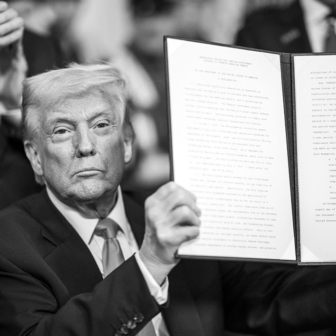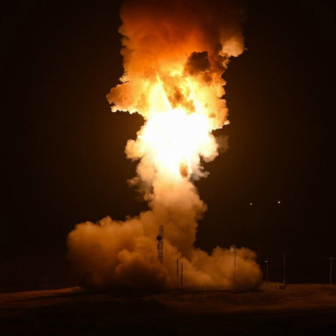SUCCESSIVE federal governments have substantially undermined Australia’s diplomatic service, cutting its funding, its staffing and its overseas missions. At the same time, governments have pushed the depleted foreign service to assist the large and increasing number of Australians who get into trouble each year in foreign countries.
The decline of Australia’s once-elite diplomatic service is doubtless partly due to the egotism of prime ministers and foreign affairs ministers, who assume that they can resolve foreign policy problems in personal meetings with foreign leaders and leave the professionals to deal with lost passports and distressed or endangered travellers. Australia’s diplomatic decline might also partly result from an increasing government preference for military and aid solutions to foreign policy problems. Australia now spends $26 billion annually on defence and almost $5 billion on aid; both budgets are rising. The annual budget of the Department of Foreign Affairs and Trade, or DFAT, totals some $1.4 billion and is steady.
Paradoxically, this state of affairs has coincided with historic and potentially destabilising changes in economic and strategic power relativities in the Asia-Pacific region, where Australia’s primary foreign policy and security interests are at stake. The rise of China and India, and the tribulations of the United States and Japan, will influence Australian security and prosperity throughout the twenty-first century.
Key questions now include how adequately Australia is placed to cope with the uncertainties these changes are bound to create, how competently Australia’s hard-pressed foreign diplomats are reporting to Canberra on developments in their areas of responsibility, and how diligently the Australian foreign service is preparing policy options for possible future international developments.
Australia’s hyperactive foreign affairs minister, Kevin Rudd, talks often and eloquently about what he calls “creative middle power diplomacy.” What he means by this is not clear, although he is investing immense personal and departmental effort in winning a seat for Australia on the United Nations Security Council – at great cost and with an outside chance of success, at best, against rivals Finland and Luxembourg.
Running DFAT under Rudd, with severe financial and personnel constraints, can be no easy task for department secretary Dennis Richardson, one of Australia’s most accomplished diplomats. Richardson, a former director-general of the Australian Security Intelligence Organisation and former ambassador to the United States, underwent major heart surgery in Washington before returning to Australia to head DFAT in January last year.
Awaiting Richardson was the first of two penetrating analyses of DFAT’s decline by the Sydney-based Lowy Institute for International Policy. In 2009 Lowy reported that “Australia’s diplomatic network was overstretched and hollowed out as a result of years of underfunding by successive governments and rising demands, particularly for consular services.” Lowy returned to the topic earlier this year in a report titled Diplomatic Disrepair, reporting what it called “a number of positive developments since 2009,” but describing them as “only very small steps” considering the problems caused by over two decades of neglect. Funding had been boosted, fifty-five new diplomatic positions established, and spending on language training increased. Nevertheless, Lowy said that Australia’s diplomatic service continued to face serious shortfalls. “Our traditional diplomatic footprint is simply outdated and inadequate,” the report concluded.
Richardson is not a man to complain about public commentary on DFAT’s situation. Nor is he a man to shy away from confronting it, or from describing the department’s problems. Earlier this year he told a Senate committee about the pressure the department was under to work under sustained pressure. And earlier this week he spoke at a Lowy Institute function in Canberra following the release of its second DFAT review.
Richardson began by saying that he did not intend to comment on the new review, but thanked Lowy for taking a critical interest in DFAT. An hour later it was plain that Richardson broadly agreed with Lowy’s observations, although he said nothing that could be construed as critical of the government and much that dutifully reflected government policy.
Richardson made a credible case for Australia’s pursuit of a UN security council seat, saying it was “pathetic” that Australia should be debating the merits of the bid. He also urged support for the Square Kilometre Array, an international astrophysics project for which Australia and New Zealand are competing. And he revealed his frustration over rising demands on consular services, noting that a couple, flown free from the Cairo riots on a chartered Qantas jet, had asked whether they would get frequent flyer points.
But most importantly he acknowledged that DFAT was still lacking adequate financial resources, a key point in the Lowy reviews. He softened the statement by saying that DFAT was now “out of the trough” of 2003–05. “Since then there has been modest and steady growth in the department… We could have done better but we have not done badly,” he said.
Richardson said nothing about the state of Australia’s “public diplomacy,” which was heavily criticised by Lowy, or about DFAT’s failure to embrace new media techniques to advance Australia’s global standing. But he had no criticism of the Lowy findings.
Not mentioned in the Lowy reports were other criticisms of DFAT that apparently remain largely unaddressed. The department is said to be top-heavy with ageing time-servers who stand in the way of promotion of bright younger people. Moreover, the department’s limited resources, combined with ministerial egos, have limited effective long-term policy development within the department. Many in DFAT hope that Richardson will tackle these issues head-on.
What he showed in Canberra this week is that he is fully engaged and finely attuned to the political realities within which all DFAT secretaries must work. •




